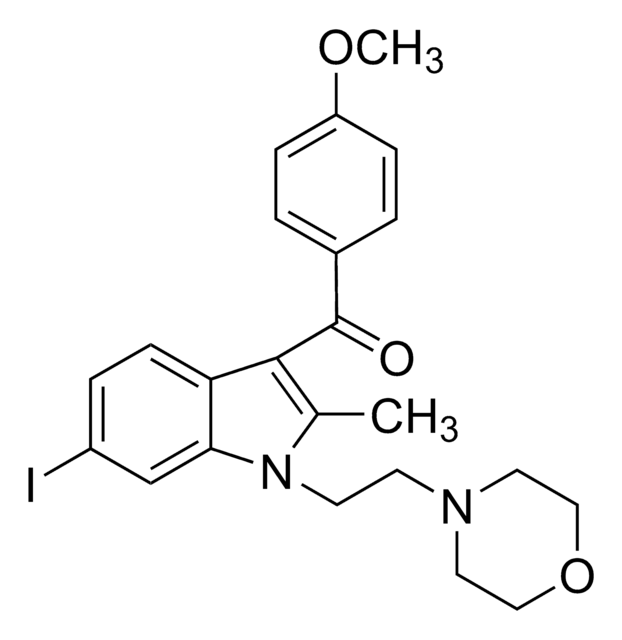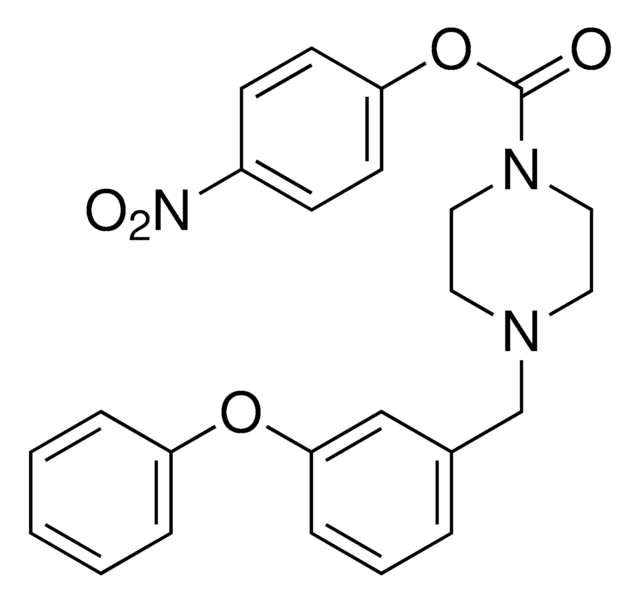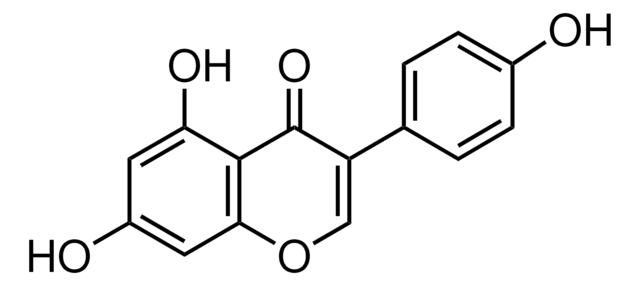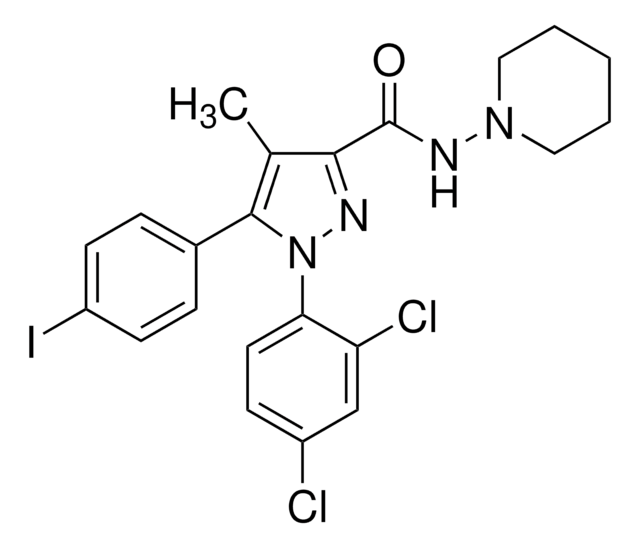J3455
JZL 184 hydrate
≥97% (HPLC)
Sinónimos:
JZL184 hydrate
About This Item
Productos recomendados
Quality Level
assay
≥97% (HPLC)
form
powder
color
light yellow to yellow-green
solubility
DMSO: >20 mg/mL
storage temp.
2-8°C
SMILES string
O.OC(C1CCN(CC1)C(=O)Oc2ccc(cc2)[N+]([O-])=O)(c3ccc4OCOc4c3)c5ccc6OCOc6c5
InChI
1S/C27H24N2O9.H2O/c30-26(38-21-5-3-20(4-6-21)29(32)33)28-11-9-17(10-12-28)27(31,18-1-7-22-24(13-18)36-15-34-22)19-2-8-23-25(14-19)37-16-35-23;/h1-8,13-14,17,31H,9-12,15-16H2;1H2
InChI key
HNSBVGMOKGQJLT-UHFFFAOYSA-N
Application
Biochem/physiol Actions
Features and Benefits
signalword
Danger
hcodes
Hazard Classifications
Acute Tox. 3 Oral
Storage Class
6.1C - Combustible acute toxic Cat.3 / toxic compounds or compounds which causing chronic effects
wgk_germany
WGK 3
flash_point_f
Not applicable
flash_point_c
Not applicable
Elija entre una de las versiones más recientes:
Certificados de análisis (COA)
¿No ve la versión correcta?
Si necesita una versión concreta, puede buscar un certificado específico por el número de lote.
¿Ya tiene este producto?
Encuentre la documentación para los productos que ha comprado recientemente en la Biblioteca de documentos.
Los clientes también vieron
Artículos
Sigma-Aldrich offers many products related to cannabinoid receptors for your research needs.
Information on fatty acid synthesis and metabolism in cancer cells. Learn how proliferatively active cells require fatty acids for functions such as membrane generation, protein modification, and bioenergetic requirements. These fatty acids are derived either from dietary sources or are synthesized by the cell.
Nuestro equipo de científicos tiene experiencia en todas las áreas de investigación: Ciencias de la vida, Ciencia de los materiales, Síntesis química, Cromatografía, Analítica y muchas otras.
Póngase en contacto con el Servicio técnico










